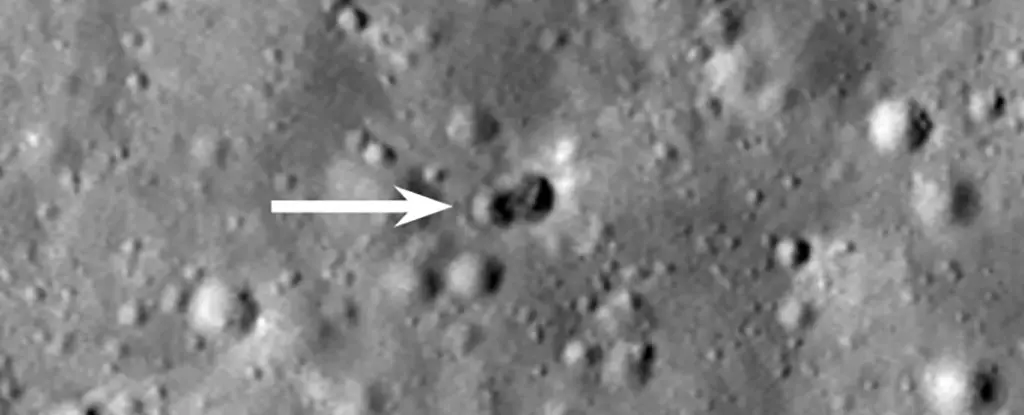The Moon has always fascinated humans, and as we continue to explore the depths of space, understanding the objects that interact with it becomes crucial. In recent research conducted by engineers from the University of Arizona, the identity of an object that collided with the Moon on 4 March 2022 has finally been confirmed. Furthermore, this incident sheds light on the growing concern of space debris and the need for careful tracking and understanding of objects that enter space.
According to the researchers, the object responsible for the impact is the Long March 3C rocket body, which was discarded during China’s 2014 Chang’e 5-T1 mission. This mission aimed to test the lunar lander that would follow. The connection was made by a diligent team of engineers-turned-detectives who analyzed the movement and changes in reflected light of the unidentified object prior to impact. This discovery highlights the significance of careful scrutiny and investigation when identifying celestial objects.
One peculiar aspect of this lunar collision is the presence of two craters instead of the usual single impact crater. Aerospace engineer Tanner Campbell explains that for equal-size craters to form, two roughly equal masses must collide. The additional payload on the Long March 3C rocket, undisclosed by the China National Space Administration (CNSA), is believed to be the cause of the double crater. Unfortunately, due to the craters being located on the far side of the Moon, an area never directly visible from Earth, determining the exact nature of the payload becomes challenging. This unprecedented occurrence raises questions about the significance and implications of double craters.
While it is not uncommon for rockets to be discarded into space or crash into the Moon, this incident highlights the growing problem of space debris. The researchers emphasize the potential for significant damage to satellites in orbit and even the International Space Station. Although much of the debris burns up in the atmosphere before reaching Earth, some objects manage to penetrate through. It is crucial to establish a system for comprehensive tracking of objects that enter space to mitigate the risks associated with increasing space junk.
Roberto Furfaro, a mechanical engineer at the University of Arizona, emphasizes the importance of not only tracking objects that head into space but also understanding their behavior and impact once they reach their destinations. The Moon, being a frequent target for space exploration, requires particular attention due to the increasing number of objects from various missions. By thoroughly monitoring and comprehending the actions of these objects, we can ensure the safety of future lunar endeavors and prevent potential collisions or disruptions to ongoing missions.
The confirmation of the Long March 3C rocket body’s identity and the discovery of the double crater on the Moon serves as a catalyst for further exploration and understanding of our celestial neighbor. As humans continue to venture beyond Earth, it is crucial to uphold responsible practices that prioritize the tracking and comprehension of space debris. By doing so, we can safeguard vital infrastructure, such as satellites and the International Space Station, while also preserving the integrity and longevity of future lunar missions.
The recent confirmation of the object responsible for the lunar impact highlights the need for meticulous investigation and tracking of space debris. The identity of the Long March 3C rocket body and the revelation of the double crater on the Moon prompt us to consider the consequences of untracked objects in space. With the ever-increasing interest in lunar exploration, it is essential to prioritize measures that ensure the safety of both humans and equipment while maintaining the pristine conditions of our celestial surroundings.


Leave a Reply